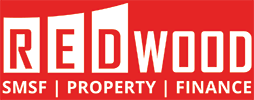Once you set up a SMSF with Redwood Advisory, a key question is how much can I contribute to the SMSF.
Super contributions fall into two categories:
1) Concessional Contributions:
These are contributions where the person putting the money into the fund is claiming a tax deduction (concessional). They include:
- Contributions made by your employer or company;
- Contributions made under a salary sacrifice arrangement; and
- Personal contributions claimed as a tax deduction by a self-employed person.
The concessional contributions cap is $25,000. This is scheduled to be reviewed in time for the 2014/15 financial year.
Concessional contributions are included in the super fund’s assessable income and, for most people, are taxed at 15% inside the fund. Those earning $300,000 or more have their concessional contributions (within the cap amount) taxed at a higher rate of 30% from 1 July 2012. If an individual breaches the cap, he or she is liable for additional tax of 31.5% on the excess amount. Hint: do not exceed the cap.
2) Non-concessional contributions:
These are contributions where the person making the contribution is not claiming a tax deduction. They include:
- Contributions made by you or another member of your fund; and
- Spouse contributions.
Non-concessional contributions are capped at six times the concessional cap, or $150,000. For individuals under 65, there is what is known as the ‘bring forward option’, which is a way you can increase the cap in one year by up to three times by bringing forward the next two years of contributions.
Non-concessional contributions are not included in the super fund’s assessable income, which means the fund pays no tax. However, as with concessional contributions, if an individual breaches the non-concessional cap, he or she is liable for additional tax of 31.5% on the excess amount.
Non-concessional contributions don’t include the super co-contribution, a contribution from a structured settlement or payout, and the capital gains tax small-business concession.
This highlights the importance of understanding the concessional and non-concession contribution limits for each year to ensure the limits of not exceeded and therefore avoiding additional tax.
This article was written by Ivan Filipovic – Director of Redwood Advisory – 1300 790 110






